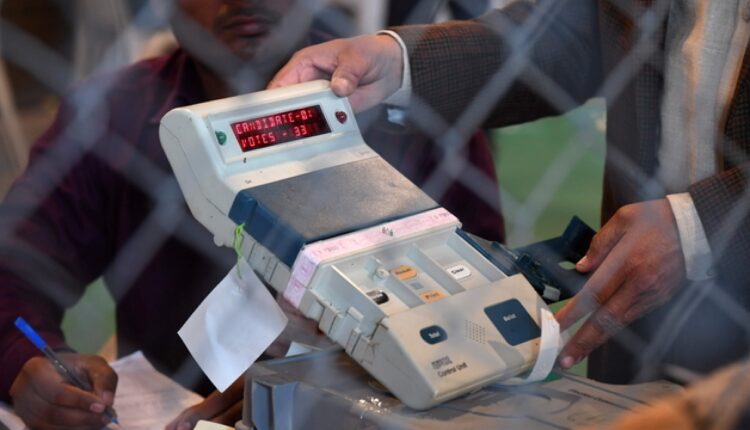
Cloud of Silence Hangs Over One-Third of VVPAT Machines in Use Since 2018, Deemed ‘Defective’
This story first appeared in The Wire
An ex-chief election commissioner says some machines being defective is routine, but 6.5 lakh is too high a number and is a “serious” matter. Experts have called for more transparency. The Election Commission is yet to respond to our queries.
New Delhi: The Wire has learnt that the Election Commission of India (ECI) has flagged over 6.5 lakh VVPAT machines as ‘defective’. These are now being sent back to the manufacturers for rectifying the defects. Notably, these are the newest machines, the latest M3 generation machines introduced for the first time in 2018. To put this in perspective, in the 2019 Lok Sabha elections, a total of 17.4 lakh VVPATs were notified for use for the Lok Sabha polls and also the assembly elections being held simultaneously. This means that over one-third (37%) of these machines have now been found to be defective by the Election Commission.
What is even more surprising is that entire series of VVPATs are being replaced. For instance, among machines that will be sent to the Electronics Corporation of India Limited, Hyderabad, the series beginning EVTEA 0001 to EVTEA 99999 have been marked as ‘defective’. So also are the rest of the series, namely, EVTEB, EVTEC, EVTED each comprising a batch of 99999 machines.
The story is the same for machines that are being sent back to Bharat Electronics Limited (BEL), Bangalore. Series like BVTAK 00001 to BVTAK 30000, BVTEA 00001 to BVTEA 30000 and BVTEC 05001 to BVTEC 75000 among others, are all batches that have been marked as ‘defective’. In all, 25,3500 machines from BEL have been found to be defective of which the series BVTEH 00001 to BVTEH 68500 are to go to BEL, Panchkula.
“These series were first introduced in 2018 and have been used in subsequent elections ever since. The machines were picked up from across the country and the new replaced machines have now almost reached all districts,” sources said.
What happens to ‘defective’ machines?
Any machine that is under litigation has been excluded. The directions from Election Commission’s headquarters at New Delhi’s Nirvachan Sadan were sent on January 27, 2022. The defective VVPATs were awaiting repairs following a decision taken by the ECI on October 8, 2021. The Wire has learnt that instructions have not been sent to the union territories of Andaman and Nicobar islands, Lakshadweep and Daman and Diu.
While the directions to the CEOs say recognised national and state political parties shall be invited to remain present at the time of opening and closing of warehouses, a member of an opposition political party said, “We were informed in December that the VVPATs would be moved out and were asked to give our consent. When we asked what was wrong with the machines and why entire series of the machines were being moved out, no explanation was given. For instance, what does T1 to T4 rectification mean, which is being cited as the reason for the machines being sent back. There are no answers.”
Transparency is the need of the hour: Experts
Experts have raised an alarm at the high number of defective machines and that too in a series. “Normally in an election, around 4000 EVMs are found to be defective. The corresponding number of VVPATS, which have higher chances of damage as these are electro mechanical devices, could be a maximum of 10 times that figure. But if what you are saying is correct that over 6.5 lakh are defective, then this is very serious,” says S.Y. Qureshi, former Chief Election Commissioner who was in office when the 2014 general elections were held.
As per ECI’s standard operating procedure, a first set of checks is required to be carried out at the level of the district electoral officer. The EVMs/VVPATs rejected at this First Level Check (FLC) are required to be sent to the manufacturers for repair within seven days of completion of the FLC in the district in coordination with the Chief Electoral Officer (CEO) concerned. Going by ECI correspondence we have reviewed, the instructions have been sent top down to the districts. The defective machines have been lying in ECI custody for over a year now.
Professor of computer science at IIT Kanpur Sandeep Shukla says, “Claims of sturdiness of VVPATs and EVMs have been made by the manufacturers and the Election Commission. Ideally, these machines should be given to a diverse set of experts to test for themselves. The lack of transparency and cloak of secrecy is the problem.”
Professor Subhashish Banerjee from IIT Delhi and a member of Citizens Commission for Elections says, “Was there an audit done for these machines? Were they matched with the EVMs and if so, what was the result? A 30% rate of defect is too high a figure.” Banerjee said he was speaking in his personal capacity.
A detailed set of questions have been sent to the Election Commission on April 10, 2023. This article will be updated once a response comes in.
